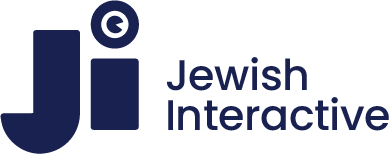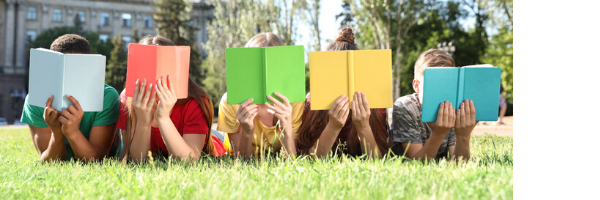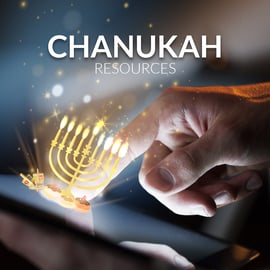What if school was a place for students to collaborate to solve real-world problems? What would the school day look like if student work consisted of meeting with stakeholders, learning from experts and creating projects that address the needs of clients who require solutions to real problems?
These are the questions teachers grapple with as they design and implement Learning Adventures, at JCDS, Boston’s Jewish Community Day School, a schoolwide initiative now in its third year that is striving to transform how students, teachers and parents understand both the purpose and structure of the school learning experience.
Spread out over the course of the school year, every grade participates in a Learning Adventure, a one-week interdisciplinary unit developed around a specific challenge selected by that grade’s teaching team. During their Learning Adventure, students take a break from all typically scheduled classes to deeply immerse themselves in an applied learning experience. Teachers plan the week around a framework of either Design Thinking, Project Based Learning, Computer Science or what we call “Jewish Engineering” – using the Engineering Design Process to address important Jewish issues The range of issues covered across the grades is vast. In the pilot year, challenges included reducing the environmental impact of the school; building musical instruments to enrich tefillah; programming computer-aided models to measure playground temperature; and preparing for a class pet. The following year, students developed interactive local history exhibits they shared at the public library, created a documentary exploring connections to God, reevaluated our school’s hot lunch systems and more.
From kindergarten students working with an artist-in-residence to create a playground Buddy Bench to eighth graders recreating Jewish culture destroyed in the Shoah, each Learning Adventure is connected by a pedagogical vision of allowing students to grapple with tangible and relevant hands-on problems and creating a solution for an authentic client. At a developmentally appropriate level, all students go through a process of identifying a problem, collecting data through research or interviews, prototyping possible solutions, improving based on feedback and then sharing their solutions with an audience. Students explore broad framing questions, such as “How can kids make friends at recess?” and “How can we better understand pre-War II life in Poland by reconnecting with the music and culture of those lost Jewish communities?” The students’ clients have included other students, residents of a Jewish senior residence, local public library patrons and civic leaders.
Third grade students, tasked with improving the overall student experience of indoor recess during the long Boston winter, started by speaking to the various stakeholders: students in all grades and teachers on recess duty. They then analyzed their data and developed problem statements that defined their task, such as:
Some students need a way to play physical games with their friends during recess, because it helps them reboot their minds and bodies.
Some students need help figuring out what to do during recess, because it can be overwhelming and unstructured.
Some students need a way to do quiet activities, but indoor recess is very loud.
Teachers on duty need a way to make sure all the students are safe and having fun.
The students took seriously their task of matching solutions with the stakeholders’ needs. The same process was evident in the first grade, where the students researched the needs of bearded dragons and then developed plans to demonstrate that they were prepared to become responsible classroom pet caretakers.
By connecting learning to real-world issues, students engage in a variety of tasks and assume multiple roles. Fourth grade students, by designing, building and testing playground models, became computer programmers, engineers, graphic designers, artists and problem solvers. Second graders cut copper pipes, sawed cardboard and used lots of duct tape to make musical instruments to enrich classroom tefillot. Similarly, seventh grade students worked as ritual committee members, water engineers, architects, fundraisers and marketers when they developed plans for a new community mikveh. Each Learning Adventure was designed to allow them to contribute to their community in meaningful ways. The powerful impact of Learning Adventures on both the students and teachers is a result of the relevancy of the problems; students are highly motivated to engage deeply when challenged to solve real-world problems.
The educators’ reflections on these experiences demonstrate the significant impact of this type of program and also suggest areas for future growth. Here are a number of lessons derived from those reflections that are significant both for educators specifically planning these types of integrated units, as well for thinking more broadly about education and schooling.
Many students thrived when given the opportunity to work for a sustained period of time on an engaging, complex and meaningful task. Students are allowed to make many choices when working on Learning Adventures, both on the specific content they are focusing on as well as what medium to use to share their learning with an audience. In an eighth grade local history Learning Adventure, one group of students interviewed the Watertown police officer who apprehended the Boston Marathon bomber and made a documentary movie on that event, while another student learned about the neighborhood’s local Armenian cultural history and then hand-sewed representative clothing. However, some students panicked, finding it stressful to no longer have both the restrictions and scaffolding of rigid, time-bound assignments that they are used to. These students benefit from clarity of purpose and more explicit instruction about the assignment expectations. A rubric often helps get these students started and keeps them on track.
Understanding that classroom resources extend beyond the walls of the school building takes some getting used to, for both teachers and students, but once everyone understands how we can alter the normal rules of school, wonderful opportunities for learning from experts and contributing to the community can be created. When sixth graders were working on reducing the school’s environmental impact, they made telephone calls to waste collection companies to determine both the cost and the requirements. It was quite a special moment for the students on the phone with the school’s recycling company when they discovered that our school could include glass and metal waste collection at no additional cost. Students preparing for a class pet got all their questions answered over FaceTime by connecting with first grade student experts in another state.
Partnering with other community organizations, both Jewish and otherwise, enriched the students’ experience by identifying authentic challenges to address, such as helping home-bound seniors find a way to welcome Shabbat, and also provided a ready-made audience interested in the students’ work. For example, a local history Learning Adventure was planned in partnership with the town historical society and the public library. The students created interactive museum artifacts that were assembled into a pop-up museum in our school where we welcomed many neighbors who had never stepped into our building. This led to an invitation for the students to share their work at the public library’s annual gala.
A lesson we learned about working with other organizations is the importance of finding areas of overlap between the goals of the Learning Adventure and the interests and mission of potential partners. General appeals to the broader community did not receive much interest, but specific projects were of interest to particular organizations. For example, when seventh graders spent the week developing a plan for a new community mikveh, an existing local mikveh, called Mayyiim Hayyim, became very involved, even promoting our work on their blog.
As we enter our third year of Learning Adventures, we continue to reflect on what has worked so far in order to build on our successes and learn from our failures. Although the initial excitement of trying something for the first time has faded, the program benefits from the high expectations that students, teachers and parents now bring to the experience. While the Learning Adventures are scheduled for just one week of the year, the impact of the learning, for both students and teachers, is year-round and lasting.





